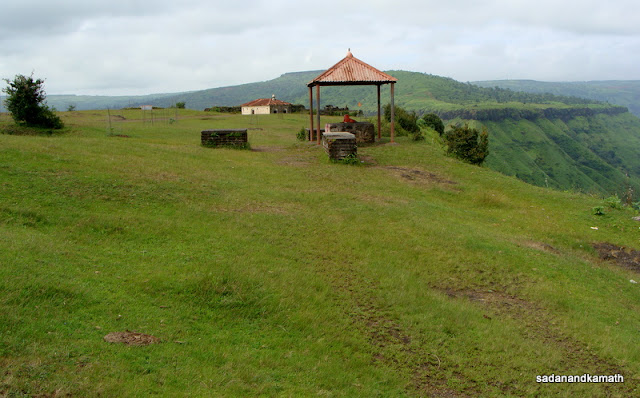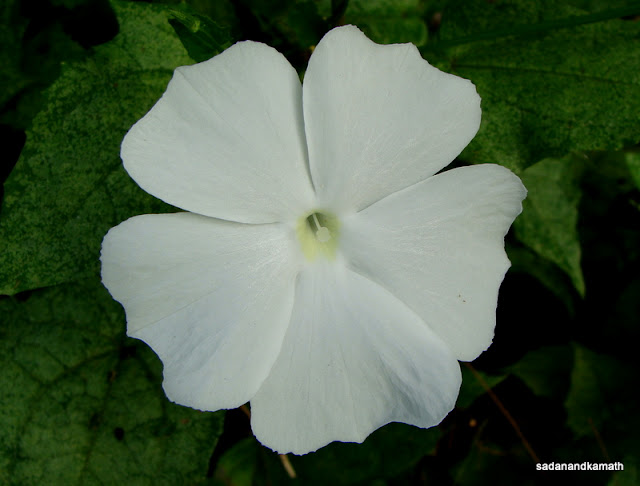My Kas Plateau trip was suddenly decided when I could no longer resist the temptation as series of beautiful wildflowers pictures of Kas Plateau made their appearance on the websites as the peak season of blooming wildflowers began. I decided to make a visit to Kas in September itself as I had already firmed up my trip to Kodaikanal and Valparai during September 26 – October 3, 2010. My friend Srinivasan (KS) who had Kas Plateau in his ‘must visit’ list, agreed to join me for the trip.
Since both of us like to avoid long bus journey and being retired, time was not a constraint for us, we decided to make an easy pace trip making Satara as the base to cover not only Kas Plateau, but also Bamnoli village for boating in Shivsagar (Koyna) Lake, Sajjangad, Thoseghar Waterfalls and Chalkewadi. All these places are located within a radius of less than 40 kms west of Satara. We could get train reservation only in Koyna Express which meant that a full day each was lost to and fro Mumbai which we did not mind. The train reached Satara railway station around 4.00 p.m. We engaged one of the autos parked outside the station for dropping us to our hotel (Radhika Palace). The 9 kms journey took less than 20 minutes for Rs.80/-. After check in hotel, we took a stroll on New Radhika Palace Road in a pleasant weather condition with Ajinkyatara Fort giving us the company. Satara city is located at the base of this fort. We also visited the market yard area where one of the state transport bus station was located. This place and area around Powai Circle seems to be the hub of Satara city as most of hotels, restaurants, shops etc are located in these areas. There are many shops selling Satara’s most famous kandi pedhas and obviously, we ended our stroll by having the taste of kandi pedhas.
In the evening, we booked through our hotel, Indigo car for two days covering (Day-1) Kas Plateau, Kas Lake, Bomnoli village and Yevateshwar temple; (Day-2) covering Sajjangad, Thoseghar Falls, Chalkewadi Plateau and Kuraneshwar Ganapati temple @ Rs.1500/- for full day. Although the car agency was agreeable to cover all these places in one day for Rs.1600/-, we felt that this would amount to a more of ‘touch and go’ trip than an easy pace trip. Since we wished to spend more time to spend on these places with the flexibility to places we liked enroute, we decided to do these places in two days. I am sure, one can hire the car a little bit cheaper by hard negotiation. We took dinner at a multi-cuisine restaurant of Hotel Rajtara located close to our hotel. The food was good and relatively cheap.
 |








































26 comments:
Great pics. Valparai is another "must see in this lifetime" place.
Hi,
I was searching for details related to Kass plateau and your blog provided me an excellent guide.
Thanks you....
Regards,
Avtar Singh
Hey there,
I'm very really impressed. The picture quality is far superior and Nice write up! Thanks for the great write up – very important you did this as a lot of people wanted to know and read about Kass plateau,.
All the Best and Take Care/ I will follow you up soon!
Sampathy
Dear KS Sir,
Great article with awesome pictures!
I find a delightful assortment of nature and landscape images, including waterfalls, fall colour, wildflowers, mountains, seascapes, plus loads more... .
I enjoyed the beauty of nature and all the pleasure and serenity that the great outdoors brings without leaving my home.
"KS Sir, Many thanks for your huge effort."
These're hundreds of beautiful and inspiring nature and landscape scenes. Thanks for sharing,
Awesome images! I love them all!
Warm Regards,
SAMPATHY
Lovely article and beautiful pictures.
How long is the flowering season here? Will it be there till October end?
Thanks all for your appreciation.
@ Sawan, the peak flowering season is generally between mid-September to mid-Oct. Our driver was telling me that sometime, the season extend up to Diwali if there is post-monsoon showers almost on a daily basis.
A wonderful blog which helps a person plan a trip in a detailed manner. The clicks are excellent. Sharing the blog on facebook with my friends. Thanks.
Really a helpful blog sir & great pictures too.
I am visiting this place next week for two days & the details you shared shall surely help.
I was just wondering whether I should take the lodging at Sajjangadh (if it is safe & clean)Instead of driving back to Satara city.
Thank you :)
Sajjangadh is a safe place to stay. I have no idea about the cleanliness of the staying options but Sajjangadh as such is a clean, serene and beautiful place to stay away from the hustle bustle of Satara.
very informative blog sir. You've mentioned(on home page of your blog) that you are visiting Kaas again this year on sep 17th weekend. Do you think that flowers will be in full bloom? OR are you checking with any local source over there to get the feedback on actual blooming situation ? its been raining heavily at preent over there. So plz let me know what you think ? As I am planning to visit on s same weekend.
@piyush, I will be visiting Kaas etc. duirng 22-24 September (avoiding week-end). I have just taken a chance hoping that flowers would be in full bloom as was our last year's visit during the same period. Even if the flowers are not in full bloom during our visit, I will have no regret as places around Satara look great during the monsoon.
very good description of your tour. I could feel that i was with you.
Pravin Shah
SK, you put in all efforts and I get all credit! :) LOL ...(re: Sampathy comment see above). -KS
Post a Comment